There’s something profoundly moving about emotional music, and as a music producer, you have the power to create these emotions through your unique compositions.
In this blog post, we’ll explore how to use major and minor scales, along with their key signatures and scale degrees.
You’ll be able to craft heartfelt music that resonates with your listeners for a lifetime.
Producing good music, and producing music that tugs at your resonates with your listeners and tugs at their heartstrings are two very different things.
Knowing the science behind how to evoke those emotions is key to standing out from the crowd.
Let’s dive in!
Table of Contents
What is a Minor Scale?
A minor scale is a type of musical scale that typically evokes a sad, melancholic, or introspective mood.
It is characterized by a specific pattern of whole and half steps between the notes, which creates a distinct tonal quality.
There are several different types of minor scales, each with its unique characteristics.
These include:
- Natural minor scales
- Harmonic minor scales
- Melodic minor scales
- Relative minor scales
Understanding these scale variations can help you craft music with a wide range of emotional nuances.
The Natural Minor Scale
The natural minor scale, also known as the Aeolian mode, is the most basic form of a minor scale.
The natural minor scale has a specific pattern of whole and half steps, which are as follows:
- Whole Step
- Half Step
- Whole Step
- Whole Step
- Half Step
- Whole Step
- Whole Step
An E natural minor scale, for example, consists of the notes E, F#, G, A, B, C, and D.
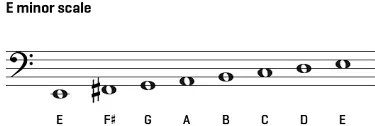
The natural minor scale intervals create an introspective mood that tugs at the listener’s heartstrings.
NOTE: A half step is equivalent to one semitone. One whole step is equivalent to two semitones.
To create natural minor scales (or any minor scale) you’ll need to know this.
Whenever you see up by a half step, or down by a half step, it just means up/down by 1 semitone.
The Harmonic Minor Scale
A harmonic minor scale is a variation of the natural minor scale.
The harmonic minor includes a raised seventh degree, creating a larger interval between the 6th and 7th notes.
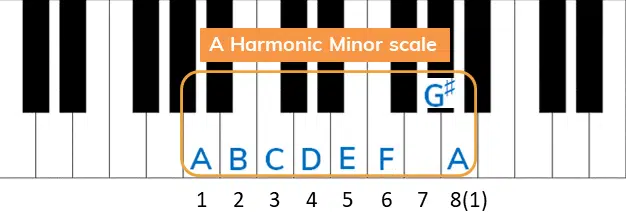
The pattern of whole and half steps for a harmonic minor scale is different than a natural minor:
- Whole Step
- Half Step
- Whole Step
- Whole Step
- Half Step
- Augmented 2nd
- Half Step
The harmonic minor scale results in a more distinctive sound.
The harmonic minor scale has a stronger sense of resolution when the leading tone (the 7th degree) resolves to the tonic (the 1st degree).
What is a Melodic Minor Scale?
The melodic minor scale is another variation of the natural minor scale.
The melodic minor scale features a raised 6th and 7th degree when ascending, but reverts to the natural minor scale form when descending.
This unique characteristic gives the melodic minor scale a more fluid, dynamic quality compared to any other minor scale.
The pattern of whole and half steps for a melodic minor scale is:
- Ascending: Whole – Half – Whole – Whole – Whole – Whole – Half

- Descending: Whole – Whole – Half – Whole – Whole – Half – Whole

A melodic minor scale creates a blend of sorrow and hope, stirring complex emotions in the listener.
For a complete breakdown of Music Theory, click here.
What is a Relative Minor Scale?
A Relative minor scale is a minor scale that shares the same key signature as a given major scale.
A Relative Major and Minor scale have the same set of notes, but their tonal center, or tonic, differs.
The relative minor scale is built on the 6th degree of the relative major scale.
For example, the relative minor of C major is A minor since A is the 6th degree of the C major scale.
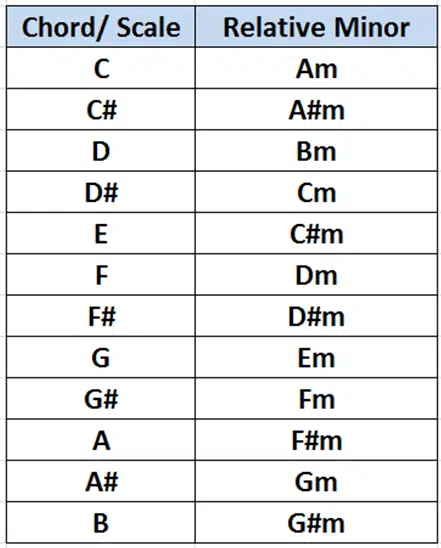
Understanding Key Signatures
It’s essential to understand the difference between major & minor key signatures in order to produce a certain emotion.
A key signature is a collection of sharps or flats that indicate the key in which a piece of music is written.
- Major keys 一 Generally have a more uplifting or happy sound.
- Minor keys 一 Evoke sadness or melancholy.
For example, consider the CM and A minor keys.
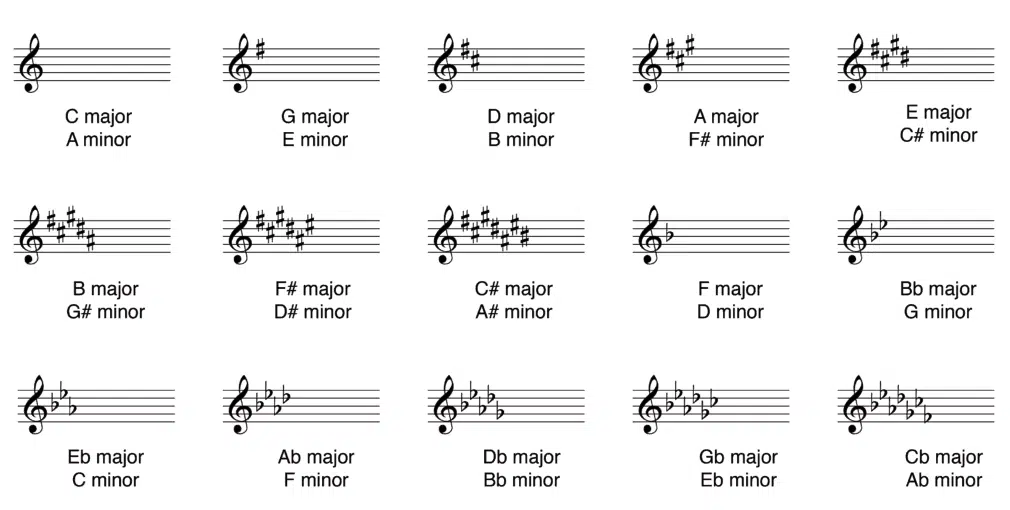
The key of CM has no sharps or flats, while its relative minor, A minor, shares the same key signature.
The difference in the emotional tone (and therefore different sound) of these keys lies in the arrangement of their notes (C D E F G A B for C major and A B C D E F G for A minor).
Relative and Parallel Keys
Understanding the relationship between major and minor keys can provide valuable insights into creating emotional depth in your music.
- Relative keys share the same key signature, like C major and A minor.
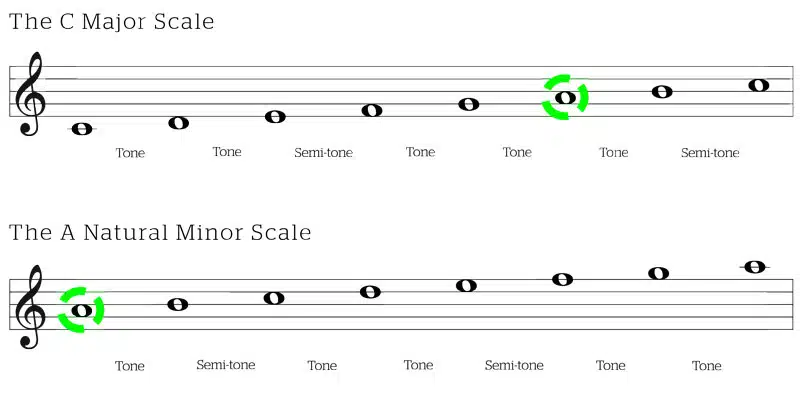
- Parallel keys, on the other hand, are major/minor keys that have the same tonic, such as C major and C minor.
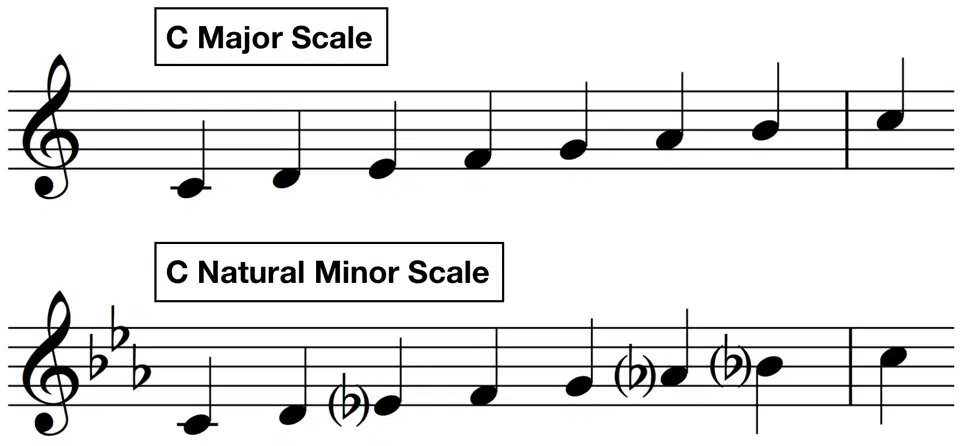
By switching between relative or parallel keys within a piece of music, you can create contrasting moods and emphasize different emotions.
Scale Degrees and Their Functions
Scale degrees are the individual notes of a scale, numbered according to their position within the scale.
Understanding the different scale degrees and their functions can help you create more emotionally charged music.
Here are the scale degrees for both major scales and the three minor scales below:
- Tonic note (1st degree) 一 The “home” note, the foundation of the key.
- Supertonic (2nd degree) 一 One whole step above the tonic, often used to create tension.
- Mediant (3rd degree) 一 Midway between the tonic and dominant.
- Subdominant (4th degree) 一 One whole step below the dominant.
- Dominant (5th degree) 一 The second most important note after the tonic, responsible for resolving tension.
- Submediant (6th degree) 一 Midway between the subdominant and the leading tone.
- Leading Tone (7th degree, major scale) or Subtonic (7th degree, natural minor scale) 一 One half-step below the tonic in the major scale; a whole step below the tonic in natural minor scales.

Building Emotion with a Scale Degree
Now that you have a grasp of scale degrees, let’s explore how to use them to create emotion.
- Example 1 一 C D E F
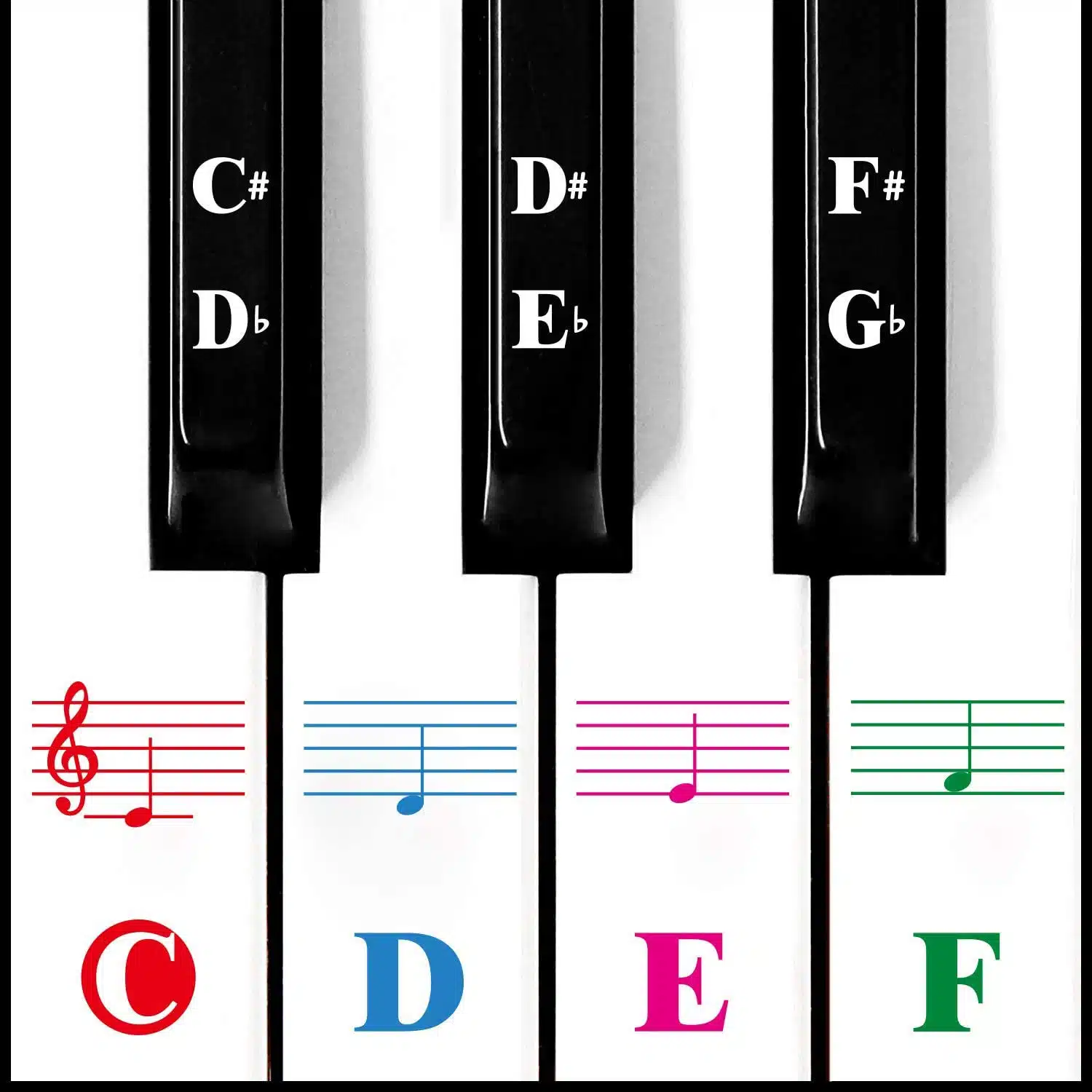
In the key of C major, this melody moves from the tonic (C) to the subdominant (F), passing through the supertonic (D) and mediant (E).
This progression evokes a sense of gentle longing, as the melody rises and falls between the stable tonic and subdominant notes of the E minor scale.
- Example 2 一 B C D E
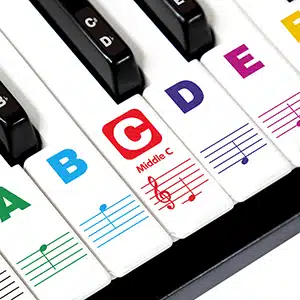
In the key of C major, this melody begins on the leading tone (B) and resolves to the mediant (E), creating a sense of tension and release.
In the context of a minor key, such as A minor, this progression emphasizes the subtonic (B) and mediant (D), contributing to a descending melodic minor scale and a melancholic atmosphere.
- Example 3 一 E F G
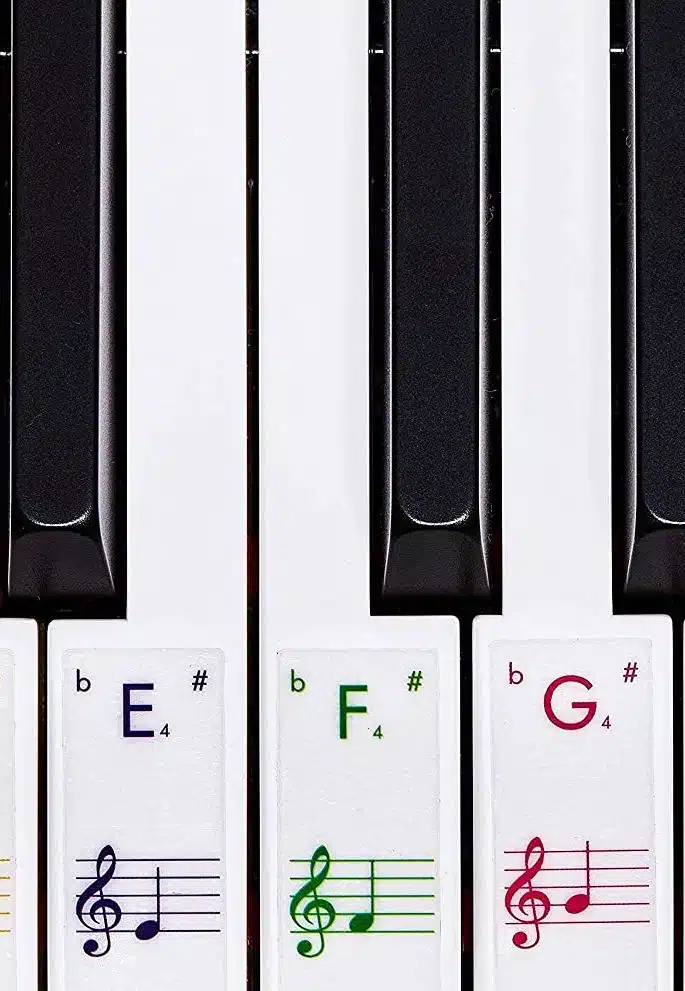
In the key of C major, this melody moves from the mediant (E) through the subdominant (F) and up to the dominant (G), creating a sense of anticipation and forward momentum.
In a minor key like A minor, this progression highlights the mediant (E), the submediant (F), and the subtonic (G), generating a somber mood.
- Example 4 一 F G A B
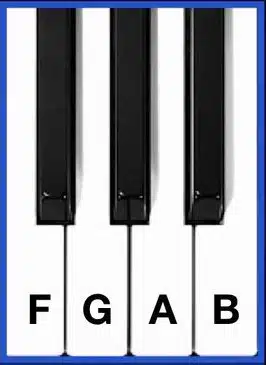
In the key of C major, this melody starts on the subdominant (F) and ascends through the dominant (G), submediant (A), and leading tone (B).
This progression creates an uplifting feeling as it climbs toward the resolution of the tonic (C).
In a minor key, such as A minor, the melody emphasizes the submediant (F), the subtonic (G), the tonic (A), and the supertonic (B), evoking a more nostalgic atmosphere.
Using Minor Scales to Create Sad Music
A) Harmonic Progressions in Minor Keys
One way to create sad music using minor scales is by crafting harmonic progressions that emphasize the key’s melancholic nature.
In a minor key, the i-iv-V (tonic-subdominant-dominant) progression is a staple for creating a somber mood.
Additionally, you can experiment with other progressions, such as i-VI-III-VII, which accentuate the minor key’s inherent sadness.
A classic example of a song created with harmonic progressions in the minor key is “Stairway to Heaven” by Led Zeppelin.

The intro of the song uses a descending chord progression in A minor (Am – AmMaj7 – Am7 – Am6) that contributes to its mystical atmosphere.
B) Melodic Techniques in Minor Keys
In addition to harmonic progressions, you can also create sad music by focusing on melodic techniques that exploit the unique qualities of minor keys.
For example, descending melodies in a minor key can evoke a sense of loss/despair.
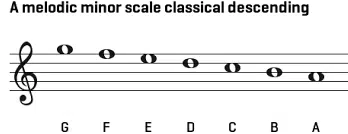
You might also consider emphasizing the mediant (3rd degree) or submediant (sixth and seventh degrees) in your melodies, as these notes often carry a strong emotional weight in minor keys.
A contemporary example of a song created with melodic techniques in the minor key is “Lovely” by Billie Eilish and Khalid.
This song is predominantly in E minor, and the melody emphasizes the mediant and submediant degrees, which creates a haunting atmosphere.
Combining Major and Minor Scales for Emotional Depth
To create music with even greater emotional depth, you can experiment with combining major and minor scales within the same piece.
This technique allows you to explore a wider range of emotions, as the contrasting qualities of major and melodic minor keys can complement and enhance each other.
A popular example of a song that combines major & minor scales is “Viva la Vida” by Coldplay.
The verses of the song are in A-flat major, while the chorus transitions to its relative minor key, F minor.
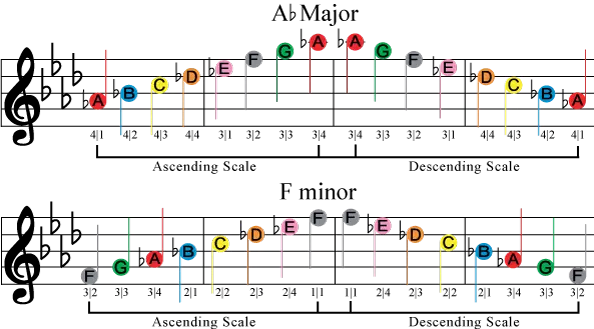
The contrast between the uplifting verses and the more melancholic choruses creates a dynamic emotional landscape.
Transitioning Between Relative Keys
You might start with a verse in a minor key, establishing a melancholic mood, and then transition to a chorus in the relative major key, providing a sense of hope or resolution.
By skillfully weaving together major and melodic minor scales, you can take your listeners on an emotional journey that’s both engaging and memorable.
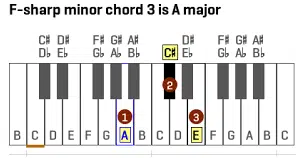
A beautiful example of a song that transitions between relative keys is “Someone Like You” by Adele.
It alternates between the keys of A major and its relative minor, F# minor.
Modulating to Parallel Keys
Another approach to blending major & minor scales is modulating between parallel keys, such as moving from C major to C minor.
This technique can create a dramatic shift in the emotional landscape of your music, allowing you to explore a full spectrum of feelings.
A well-known example of a song that modulates parallel keys is “Creep” by Radiohead.
It begins in the key of G major but modulates to its parallel minor key, G minor, during the chorus.
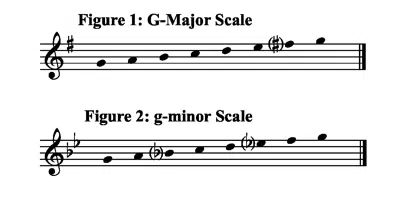
This modulation adds an unexpected twist and a darker, more intense emotion; contributing to its unique, haunting quality.
Additional Techniques for Crafting Emotion
To further enhance the emotional impact of your music, consider exploring these additional techniques:
Dynamics
Incorporating variations in dynamics, such as crescendos and decrescendos, can heighten the emotional intensity of your compositions.
Soft, delicate passages can evoke a sense of vulnerability or introspection.
Louder, more forceful sections can convey passion or intensity.
Tempo and Rhythm
The tempo and rhythm of your music can also play a significant role in shaping its emotional character.
Slow, deliberate tempos often suggest sadness or reflection.
Faster tempos can create a sense of urgency or excitement.
Experimenting with syncopation and other rhythmic devices can add further depth and complexity to your music’s emotional landscape.
Articulation and Phrasing
The way you articulate and phrase your melodies can have a profound impact on their emotional resonance.
Smooth, legato phrasing can create a sense of longing or tenderness, while staccato articulations can lend a sense of agitation or unrest.
By carefully considering your choices in articulation and phrasing, you can create greater emotional depth and nuance.
Conclusion
A Minor scale is a powerful tool for crafting emotionally charged, sad music that resonates with listeners.
Whether you’re utilizing natural, harmonic, melodic, or relative minor scales, these techniques offer endless possibilities for expressing the profound depths of human emotion in your compositions.
By exploring various chord progressions and melodic techniques, or even breaking the rules, you can create unique and impactful music that leaves a lasting impression.
Don’t be afraid to experiment and let your creativity run wild!
After all, it’s through this process of discovery that the most memorable and moving masterpieces are born.
If you’re looking for already crafted, perfectly executed chord progressions, melodies, and advanced MIDI scales that you can instantly plug & play into your own music download the FREE Unison Advanced Scales MIDI Essentials pack.
It’s the best way to ensure your music stands out from the crowd and blows the minds of whoever hears it.
Until next time…







Leave a Reply
You must belogged in to post a comment.